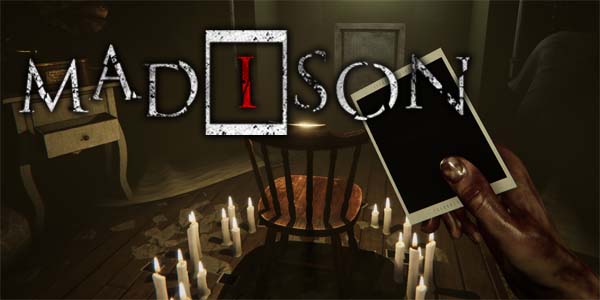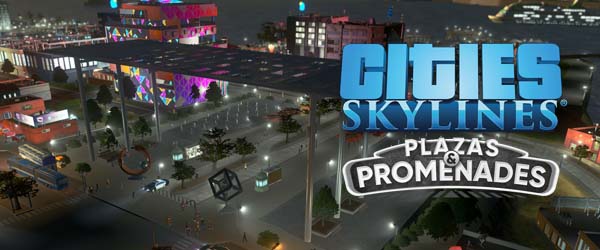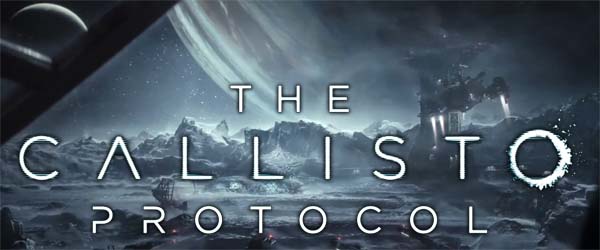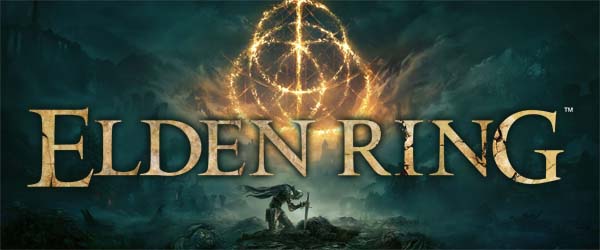
I feel like Halloween just wouldn't be Halloween anymore without playing some new P.T.-inspired indie horror game. This year's "hot" title seemed to be MADiSON by Bloodious Games, which I started playing with a group of 2 friends on Halloween night (after returning from taking the kids Trick or Treating), but we didn't get around to finishing until after the New Year. It wasn't that we didn't want to keep playing. Quite the opposite, in fact. The reason it took so long to finish is because all 3 of us really wanted to keep playing, so I had to wait till all 3 of us were available for a next session before continuing.
In addition to being another indie horror game in a long line of P.T. wannabes, MADiSON also follows in closely off the coattails of Visage. Both games heavily utilize a polaroid flash camera as a critical multi-tool, but MADiSON does one-up Visage by making the camera much more integral to core gameplay. While I only remember the camera in Visage being used as a source of temporary illumination, the camera of MADiSON is both integral to the story, and also absolutely necessary for solving multiple puzzles and for progressing the game's story.
Yet another indie horror game about wandering the halls of a haunted house -- this time with a camera!
Ocular Obscura
The core gimmick of MADiSON is that the player uses a polaroid camera to take pictures of the environment, and the resulting photograph will show things that aren't really there. These photographs will be used as clues to solve a puzzle or to progress the scenario, or taking the picture will just outright trigger the next objective. The house is littered with such puzzles. Unfortunately, the layout of the house, the pacing of the scenario, and the solutions to many puzzles can be a bit on the obtuse side. So much so, in fact, that Bloodious Games resorted to scattering blank polaroids near important objects, which act as obvious signposts that you should take a picture of the thing. This isn't exactly obvious at first, because many such marked objects will get no reaction from the camera until later parts of the scenario, when they become relevant to the current task at hand.
The dense nature of the game's map creates a lot of problems for pacing and signposting. Multiple puzzles, from different chapters of the game, might be present in the same space and could serve to interfere with one another or confuse the player.
This isn't to say that the puzzles are necessarily "bad". Once we realized that the house is littered with red herrings that don't become relevant until later, I actually started to like that these puzzles are a bit more complicated and multi-layered than the typical adventure game fare the we've been getting over the past decade or so. This was, in fact, a big reason why all 3 of us wanted to continue playing the game: we wanted to solve the next puzzle! So many adventure and horror puzzles these days don't get much more complicated than "open a drawer, find a key, and use said key on the one and only lock in that same room." They can feel so patronizing. MADiSON's puzzles definitely do not feel patronizing!
Many puzzles require careful observation and inferences from the environment.
Even if there is a simple clue like a color or a number that is given to the player, there is always some confounding additional factor. It's never just as simple as matching a number or a color or a shape. Most of these puzzles require some careful observation of the player's surroundings, some contextual inferences that won't be obvious to every player, and occasionally a lit bit of arithmetic, spatial, or logic skills. Playing this game in a group actually did help in this regard. Any one of us would have been stuck for a while on multiple puzzles, but there was always one of us who would pick up on a given clue and point it out to the others.
But some of the early puzzles, in particular, are a bit heavy on the red herrings and could definitely have used some better sign-posting and direction.
[More]
49704781-82c7-44a0-b8aa-67e4cff81352|1|5.0
Tags:Madison, Bloodious Games, indie gaming, horror, psychological horror, camera, demon, possession, occult, ritual, inventory, walking simulator, PS5

Looks like we're back to seeing 2 Cities: Skylines expansions being released in the same calendar year. Airports released in January, and now in September, Plazas & Promenades hit digital storefronts. I wonder if this will continue now that most businesses (and presumably Colossal Order) are back to business as usual following the COVID pandemic? Or maybe Colossal Order is migrating towards releasing even smaller, more module micro-expansions such as the recently-released Financial Districts DLC (which I'll review later)? Or will we finally see an announcement on the rumored sequel to Cities: Skylines soon?
Based on previews, I was expecting this expansion to completely change the way that I build my cities by giving me more freedom to pack structures into compact spaces and to more seamlessly integrate parks with business districts, leisure and tourism districts, or neighborhoods. I immediately started thinking of multiple ways that I could potentially use these 2 ideas to create new city layouts and concepts. Unfortunately, I set my expectations too high, and pedestrian areas ended up not being quite as game-changing as I thought and hoped they might. The big problem is that Plazas & Promenades is just another iteration of the paintable area concept that has been the focus of almost every expansion since Parklife. Paintable areas is a good mechanic for things like parks and university campuses, but it can be extremely limiting for an application as broad as neighborhoods or entire districts.
Plazas & Promenades allows the construction of more walkable neighborhoods and districts.
Roads minus the cars
First and foremost is the simple fact that the new pedestrian roads look and act more like regular roads than like pedestrian paths. They are the same size as roads, being either 2 or 4 tiles wide, and are laid out almost exactly the same. None of these pedestrian roads are 1 tile wide. And, of course, the legacy pedestrian paths have not been updated to allow buildings to be zoned along them. The end result is that these "Pedestrian Zones" don't take up any less space, and aren't any more compact than any other district. Though, the high-density, "wall-to-wall" residential buildings do have the same capacity as the normal, high-density residential skyscrapers (20-26 households), despite being a fraction of the size. So I guess it's "more compact" vertically? More people being crammed into smaller spaces? If so, it doesn't seem to have any impact on the citizen's happiness or satisfaction ratings.
Using Pedestrian roads outside of Pedestrian Areas is a liability, since zoned buildings may build on them.
Even though pedestrian roads can be placed anywhere, buildings can only be placed or zoned along them if they are in a dedicated Pedestrian Area. So if I want to create a single walkway or alleyway and zone some homes or shops along it, I have to paint the entire area as a Pedestrian Area. Well, at least, that is the case if you want the buildings to be functional. The game actually will let the player zone and place buildings along pedestrian roads outside of pedestrian areas, but doing so will result in the building flashing a "Not in Pedestrian Zone" warning, and the building won't operate.
[More]
18d09944-68e9-4886-b7fb-12dd3b3e66a3|1|5.0
Tags:Cities: Skylines, Cities: Skylines: Plazas and Promenades, Colossal Order, Paradox Interactive, steam, PC, expansion, pedestrian, roads, plaza, promenade, park, seaside resorts, mid-century modern, beach, boardwalk

I saw a lot of social media posts in the days after Callisto Protocol's release complaining about the game being awful. Some said it was buggy and riddled with performance issues. Others said it was just a bad game, and would be bad even if it were stable.
I didn't experience a lot of the technical issues (on PS5) that others were reporting. But I also didn't start playing till later that weekend, so had the benefit of the day-1 patch. Maybe that fixed a lot of the technical complaints? Yeah, there were still some lingering technical issues, but they were mostly nagging problems that I could look past.
So I went through most of the first half of the game thinking "This ain't so bad." It wasn't very good either. But it seemed like it was being unfairly maligned. It's Dead Space, but just ... not good.
Callisto Protocol is borderline plagiarism of Dead Space, but not a very good copy.
But as I got into the middle of the game's campaign, my opinion began to change. The issues and frustrations mounted until they boiled over in the game's first boss fight (which doesn't happen until more than halfway through the campaign). Callisto Protocol is just not very well designed or though-out. It suffers at fundamental levels of gameplay design.
Space Zombie Punchout
Callisto Protocol's problems start with the awful melee and dodge system -- which is kind of the whole gimmick of the game. Instead of pressing a button to trigger a dodge, the character automatically dodges left or right if the player is pressing the left analog stick left or right (respectively when the enemy makes an attack. The character will also block if the player is pressing backwards when the enemy attacks.
It's a system that feels more like Mike Tyson's Punchout than any action shooter I've ever played. But where Punchout is a boxing game that features a stationary opponent ducking left or right to dodge the punches of a single opponent lined up directly in front of you, Callisto Protocol is ... not that. The character in Callisto Protocol is ambulatory, and attempting to navigate an environment while also fighting multiple enemies at both melee and at range.
I could not get the hang of which direction I should be dodging -- except against bosses.
I found it very difficult to get the hang of the melee combat -- at least outside of boss fights. Strangely, the boss fights seemed to have the most clearly telegraphed attacks and reliable dodging. Outside of boss fights, however, enemies are frequently zombie-like monsters that rush at the player and shamble around, making it difficult to read their movements. As such, I never know which direction to dodge. And even when I do seem to correctly dodge, I sometimes take damage anyway, which leads to the next big problem. Pretty much every time I had to engage in melee combat, I would die and have to retry.
[More]
7280ae0d-0d27-4b73-bd65-d0a7184a805a|2|3.0
Tags:The Callisto Protocol, Striking Distance Studios, Krafton, quicktime event, melee, dodge, science fiction, horror, shooter, zombie, arcade, Dead Space

I always considered the first Dark Souls to be an "open world" game in all the ways that matter. The world is interconnected, coherent, and surprisingly functional. Almost every location in the game is walkable from almost any other location, and every distant landmark is an actual place that you can go, which usually has a big, scary monster waiting to show you the "YOU DIED" screen for the thousandth time.
As such, I didn't really expect that a transition to an actual open world would in Elden Ring would really make all that much difference -- either positive or negative. Dark Souls, Bloodborne, and Sekiro already felt open and exploratory despite being a series of linear corridor crawls cleverly interconnected into a tight helix. So I didn't expect Elden Ring to really feel all that much more open or exploratory. Further, all of From Software's games are also designed from the ground-up with a play-at-your-own pace paradigm of story delivery -- in that From's games are more about doling out "lore" in piecemeal rather than about a linear narrative with a clear-cut beginning, middle, and end. So I wasn't terribly worried that a transition to an open world structure would break any narrative flow or the sense of stakes for the character, as it does in so many other open world games.
From Soft's brand of player-driven lore discovery is well-suited to an open world format.
What I didn't expect though, is how the open world would dramatically improve both the accessibility and the challenge of the game.
Elevating the genre
Having transitioned to a more traditional open world design, Elden Ring does suffer from some of the same problems that plague the sub-genre. Assets, enemies, bosses, traps, and so forth are all re-used throughout the map, and many of the dungeons look like they were pulled straight out of Bloodborne's Chalice Dungeon generator. Each region of the map will assuredly have at least one mine tunnel full of upgrade stones. It will have at least one crypt dungeon (usually with a Burial Tree Watchdog boss that looks like a cat statue). It will have at least one set of ruins with a boss waiting in the basement. And they'll all have a minor Erdtree with an Erdtree Avatar (or similar) boss.
That being said, I haven't come across any of these dungeons that feels to me like it was just haphazardly thrown together. Each dungeon has its enemies, traps, and setpieces thoughtfully arranged to test various gameplay skills and the player's power of observation and thoroughness of exploration. Each one also has a unique piece of loot offered as a reward for defeating it -- usually a weapon, talisman, or spirit ash. Unlike, say, Skyrim, which just rewards all of its dungeons with disposable weapon or piece of armor that is level-scaled and arbitrarily magical, each dungeon in Elden Ring rewards a unique item that conveys a piece of lore. Early in the game, almost all of this loot is something that will be useful to most builds, which really helps to encourage the player to continue exploring these mini-dungeons. And later, even if the item isn't useful for a build, it might still reveal valuable lore.
Bosses are frequently re-used, but none of the dungeons feels haphazardly thrown together.
The sheer volume of places to go and things to do might seem overwhelming, but it's also a huge boon to new or struggling players. They have plenty of options for alternative challenges to try, which vary in difficulty. Getting stuck on the main quest path, or in a particularly nasty optional dungeon is easily alleviated by simply wandering off in another direction -- any other direction -- and trying something new that might be a bit easier to conquer, or which might provide loot that is useful in the places where you are struggling. Or you can just wander around the overworld and grind.
A lot of these dungeons can also start to feel tedious and unnecessary. I can go through entire dungeons, beat a boss, and still not have acquired enough runes to gain a single character level. On the one hand, this is frustrating, and some of these dungeons feel like a waste of time for a mid-to-high-level character. On the other hand, the increased desire to hold onto these runes means I'm more inclined to run away from a fight that I'm not equipped to handle, which forces me to engage more with that open world by trying to find another boss or another dungeon that is more my level, rather than continuously bash my head against the same boss wall over and over again.
If you get stuck on a boss, explore somewhere else.
Players are much more free to follow your own path through the game. In fact, From included plenty of opportunities for sequence-breaking for particularly inquisitive and observant players. Dungeons and bosses that seem like a mandatory bottleneck for progress can sometimes be skipped entirely. And honestly, it's not even all that hard to find these bypasses, since they are often out in plain view for anybody who bothers to deviate off the main path at all.
And this process of exploration really does provide a sense of genuine discovery in ways that most other open world games fail to deliver. The full scope of the map is hidden to the player at the start, so reaching the crest of a hill and finding an entire continent that wasn't on your map a moment ago is genuinely surprising and awe-inspiring. The fact that every notable point of interest is not immediately marked by climbing a tower or finding a checkpoint really facilitates a sense of exploration and adventure. It really feels like there's always going to be something new and interesting over every hill, around every corner, and within every dungeon.
[More]

One of my pet peeves with sports games is that they like to make the game sound newer and more advanced than it actually is by putting next year in the title. The Madden that releases in 2022, and which is based on the 2022 NFL season, isn't called Madden 2022; no, it's called Madden 23! Same goes with other big-budget sports games, with the sole exception possibly being video games based off the Olympics (do those even get made anymore?).
One of the things that I liked about the slate of indie football games (Maximum Football and Axis Football) is that they used the current year in the title. There was no confusion or misunderstanding when saying "the 2021 version of Axis Football" -- it's called Axis Football 2021, and it was released in the fall of 2021. But if I say "the 2021 version of Madden", you might wonder if I mean Madden 22, which released in 2021; or Madden 21, which has "2021" in the title, but which actually released in 2020 and is based off the 2020 NFL season.
Well now Axis Football has adopted the same numbering scheme as its big-budget cousin, and they have skipped Axis Football 2022 in favor of releasing Axis Football 2023 in the 2022 calendar year. Sigh... I'm not sure what Axis Games' reasoning for this is. Maybe they felt pressured to adopt the same numbering convention as the big-budget sports games. Perhaps the more sensical numbering scheme was actually confusing people: "Why is there a Madden 22, but no Axis 22 yet?" Whatever the reason, there is no Axis Football 2022, and we instead are going straight to Axis Football 2023.
The leap I've been waiting for!
But my disappointment with Axis Football 2023 basically starts and ends with its title. This is probably the biggest single-year jump in gameplay quality that I have seen from this series since I started playing Axis Football way back in 2018. Axis Football 2023 looks and feels much more polished than in previous years thanks to the developers finally addressing the lackluster catching and pass defense animations that made throwing the ball in previous years feel like such a crap shoot.
Receivers and DBs play the ball more realistically.
The new animations make pass catching and pass defense so much more readable. I can actually understand why a particular pass is caught, incomplete, or intercepted because the ball doesn't just hit the receiver's body and either stick to it or fall to the ground. I see receivers leaping to catch overthrown passes. I see them reach down to try to catch underthrown passes. I see defenders putting an arm out to swat the pass.
It's much clearer why passes are complete or not.
On top of that, the receivers actually have momentum when they perform their catching animations, and that momentum will affect how quickly they can turn upfield -- if they can turn upfield at all. The momentum on catching animations serves to limit the amount of run-after-catch yards that lead to inflated passing stats and scores in previous versions of Axis Football. Now, if a receiver has to come back towards the line of scrimmage to catch a pass, he won't be able to instantly pivot back upfield for extra yards as soon as he catches the ball. He'll continue to take a couple steps towards the line of scrimmage before being able to plant or turn and head upfield, which gives pursing defenders a chance to converge and tackle him before he gets going.
Similarly, receivers running horizontally across the field will also have to follow-through on their catch animation and preserve their momentum, which prevents them from immediately turning upfield. Receivers running towards or along the sidelines will also often have their momentum carry them out of bounds, which makes throws to the sideline (such as quick outs or hitting a running back in the flats) feel much less exploitative than in previous years because the receiver will likely be forced out of bounds instead of being able to instantly turn upfield for 10 or 15 yards.
Receivers retain their momentum after catching the ball, limiting yards-after-catch.
Put simply, the passing game actually looks and feels more like real football, and it elevates Axis Football tremendously!
[More]
|

| 12 | | | | | | | 60 | | 11 | | | | | | | 55 | | 10 | | | | | | | 50 | | 09 | | | | | | | 45 | | 08 | | | | | | | 40 | | 07 | | | | | | | 35 | | 06 | | | | | | | 30 | | 05 | | | | | | | 25 | | 04 | | | | | | | 20 | | 03 | | | | | | | 15 | | 02 | | | | | | | 10 | | 01 | | | | | | | 05 |
|